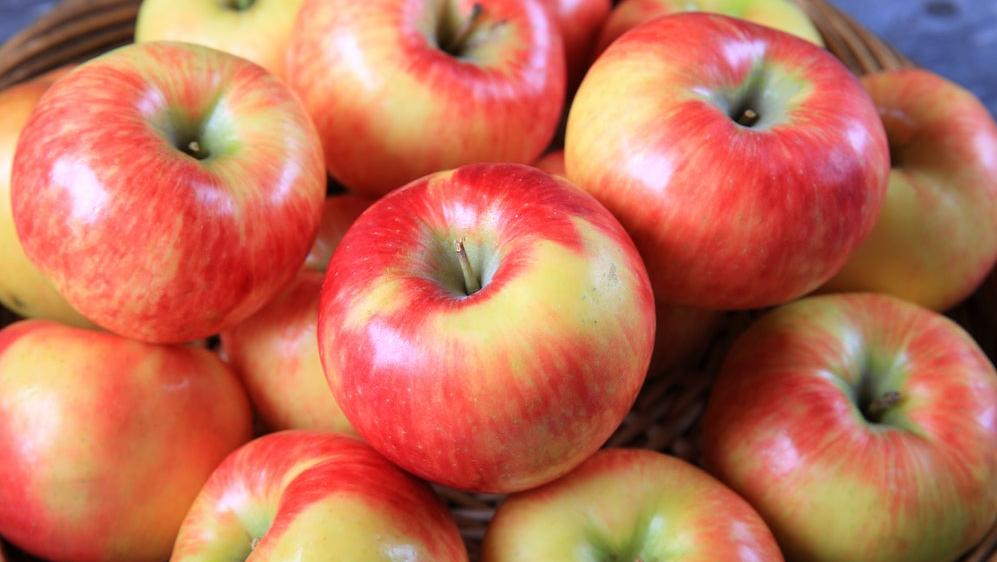Honeycrisp Apples Are Getting Cheaper
Prices of this designer apple are finally falling, at least for now.
Caviar is known for being expensive, but it's also a food that very few of us crave on a daily basis, and many don't even know what they're "missing" by not buying it. The Honeycrisp apple is a different story: It's a luxury food that Americans can't get enough of, even though this variety costs significantly more than your run-of-the-mill Red Delicious or Granny Smith. That's why it's such welcome news that prices on Honeycrisp might finally be coming down, thanks to demand finally matching what orchards are able to produce. Axios Twin Cities has the story.
The delight of the Honeycrisp apple
If you've never had the pleasure of biting into a Honeycrisp apple, you might wonder what the big deal is. Let's start with the fact that they are, indeed, big; you can often find large, bulbous Honeycrisps at the grocery store standing in stark contrast to the relatively puny Pink Ladies and Galas. Developed at the University of Minnesota in the 1970s and first released for public consumption in 1991, the Honeycrisp was bred for ideal texture and flavor, whereas many cultivars are designed to address more practical concerns like portability and shelf life. The enlarged cell structure of the Honeycrisp means the apple retains more juice and offers a satisfying crunch with each bite. In short, it's everything a snacking apple should be—and for the longest time, our appetite for this apple outpaced supply, leading to higher prices for consumers.
Why Honeycrisp prices are falling
Axios reports that the average price of Honeycrisps dropped from $2.49 per pound in February 2023 to $1.70 per pound in February 2024. (Keep in mind that the average bag of Honeycrisps at the grocery store can weigh several pounds.) That price reduction was always going to take time, because although the popularity of the apple took off in the mid-'90s and growers quickly planted more trees to keep up, those trees have taken a long time to reach maturity. Now, they're finally at their peak production levels, and the growers have a much higher surplus on hand than in prior years.
But lower prices for us mean lower prices for farmers, too, and Honeycrisps are quite a bit of trouble to produce. Since they were bred primarily for flavor, they aren't as hardy as other varieties, and they can bruise easily during production. Axios also notes that it takes two hands to pick a Honeycrisp instead of one, which slows down the harvesting process. If these labor-intensive apples no longer fetch top dollar at the grocery store, growers might decide the trees are not worth planting in the future.
For now, though, it seems that an equilibrium has been reached that lets consumers enjoy our favorite apple with slightly less sticker shock. When just about everything at the grocery store is more expensive these days, that's a sweet, crunchy bit of comfort.
